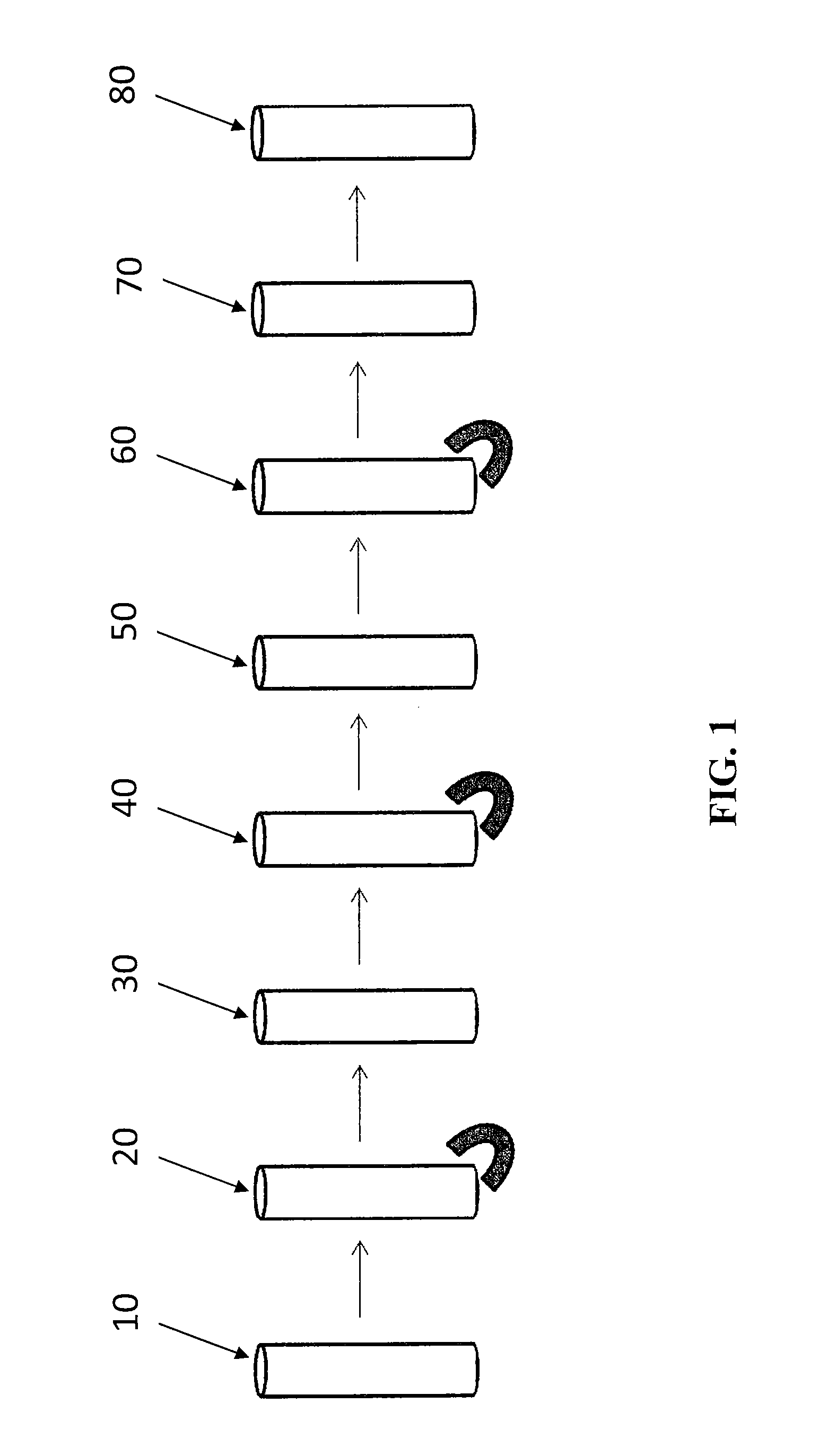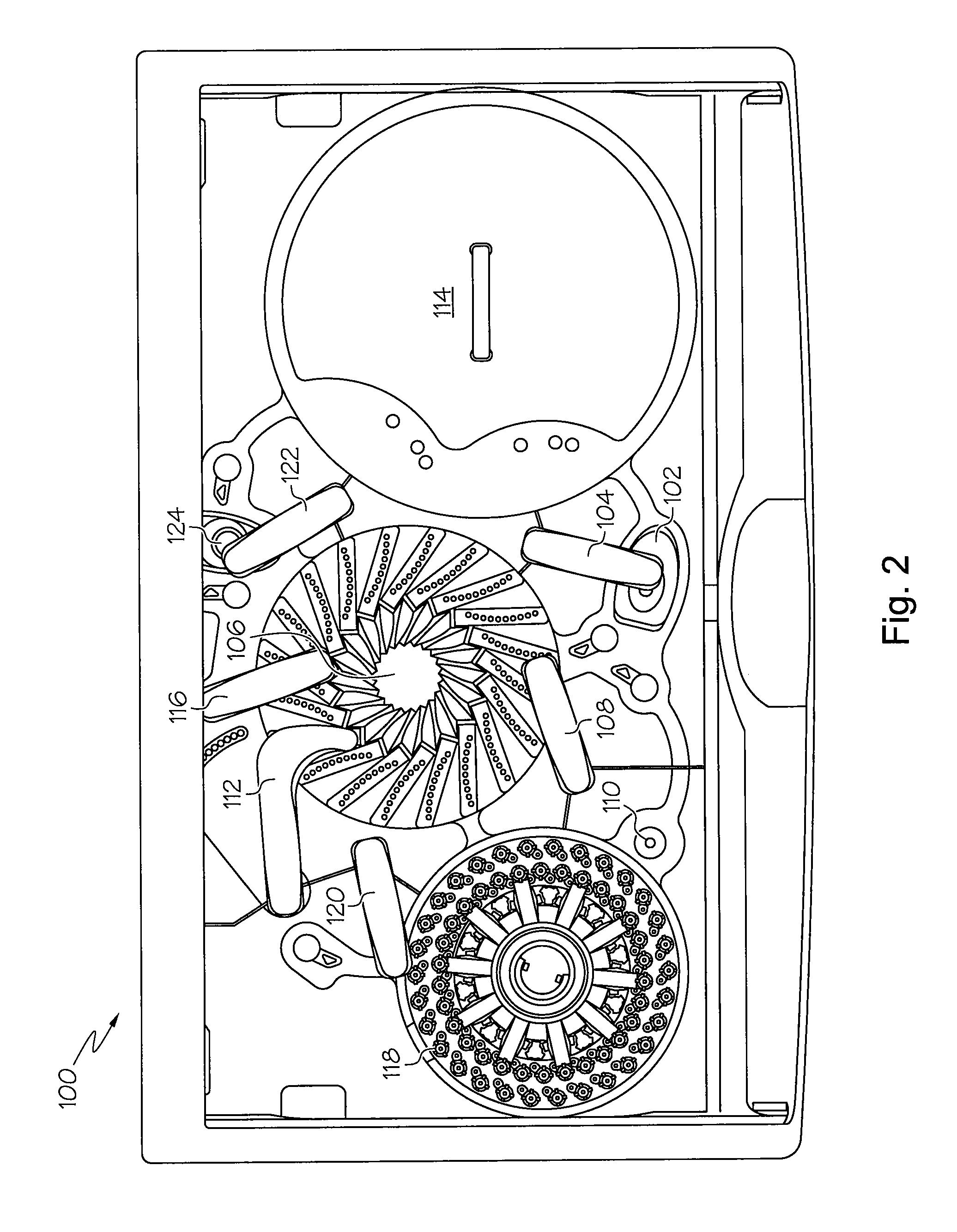Automated immunoanalyzer system for performing diagnostic assays for allergies and autoimmune diseases
an immunoanalyzer and allergy technology, applied in the field of automatic immunoanalyzer system and process for performing diagnostic assays for allergies and autoimmune diseases, can solve the problem that the original particle fraction will be lost in subsequent chemistry processes, and achieve the effect of maximum detection sensitivity
- Summary
- Abstract
- Description
- Claims
- Application Information
AI Technical Summary
Benefits of technology
Problems solved by technology
Method used
Image
Examples
example 1
Biotinylation of Anti-Human IgE or Allergen Extracts
[0057]2 μL of NHS-PEG12-Biotin (Pierce) 250 mM in DMSO is added to 1 mL of affinity purified anti-human IgE (ImmunoReagents) 5.0 mg / mL in Phosphate Buffered Saline (PBS). Or, 1.6 μL of NHS-PEG12-Biotin (Pierce) 250 mM in DMSO is added to 1 mL of allergen extracts 1.0 mg / mL in Phosphate Buffered Saline (PBS).
[0058]The reagent solution is mixed and placed on ice for 2 hours. Free biotin reagent is separated from the biotinylated antibody by dialysis against two changes of PBS (volume ratio of antibody to buffer—1:100) at 2-8° C. for 4 hours and overnight.
example 2
Preparation of Fluo-Bead
[0059]5 μL of Biotin-Fluo (Alexa Fluor 594 Biocytin, Sodium Salt, Life Technologies) 1 mM in ddH2O is added into 45 mL of PBSTHP Buffer (10 mM sodium phosphate, pH 7.4, 0.9% (w / v) NaCl, 0.05% (v / v) Tween-20, 10 mg / mL HSA, 1% (v / v) ProClin 950). Mix well.
[0060]5 mL of SA-Speed Bead (Sera-mag Speedbeads Streptavidin-Coated Magnetic Particles, Thermo) 10 mg / mL is added into the Biotin-Fluo solution and mixed well.
example 3
Assay for Specific IgE Levels to Allergens
[0061]10 μL Fluo-Bead (Fluorescence labeled para-magnetic microparticles) at bead concentration 1 mg / mL is dispensed into the reaction cuvette; 40 μL of biotin-allergen (e.g., Egg white, Milk, Peanut, etc) or biotin-anti-IgE antibody, is dispensed and mixed into the Fluo-Bead, and incubated for 1-10 min at 37° C. After washing, allergen- or anti-IgE-coated beads are resuspended in 40 μL of reaction buffer. Serum samples obtained from atopic and non-atopic individuals are assayed against allergens. A 10 μL sample was added to 40 μL of suspended allergen-coated beads in reaction cuvette. For the six point standard curve, 10 μL of serum standards (secondary standards calibrated against the WHO IgE Standard 75 / 502) are each added to 40 μL of anti-IgE-coated beads in a reaction cuvette. While various different labeled anti-IgE conjugates can be utilized in accordance with the present teachings, in accordance with certain teachings, the following ...
PUM
| Property | Measurement | Unit |
|---|---|---|
| pH | aaaaa | aaaaa |
| pH | aaaaa | aaaaa |
| pH | aaaaa | aaaaa |
Abstract
Description
Claims
Application Information
 Login to View More
Login to View More - R&D
- Intellectual Property
- Life Sciences
- Materials
- Tech Scout
- Unparalleled Data Quality
- Higher Quality Content
- 60% Fewer Hallucinations
Browse by: Latest US Patents, China's latest patents, Technical Efficacy Thesaurus, Application Domain, Technology Topic, Popular Technical Reports.
© 2025 PatSnap. All rights reserved.Legal|Privacy policy|Modern Slavery Act Transparency Statement|Sitemap|About US| Contact US: help@patsnap.com



